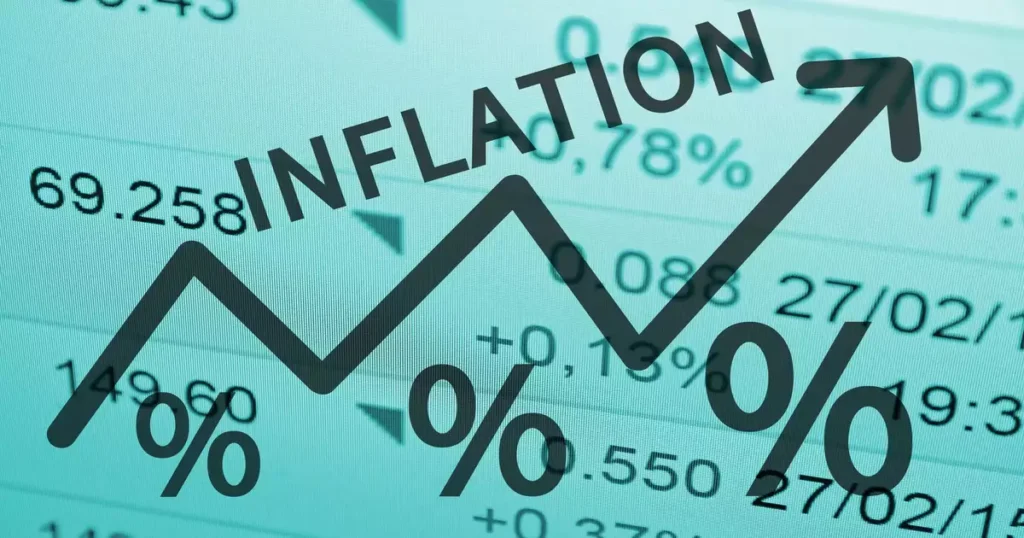rajkotupdates.news: US Inflation Jumped 7.5% in 40 Years
The United States is experiencing a significant economic shift as inflation rates soar to a staggering 7.5%, marking the highest increase in four decades. This inflationary spike has far-reaching implications for consumers, businesses, and the broader economy. In this article, we will explore the factors driving this surge, its effects on various sectors, and potential measures to mitigate its impact. rajkotupdates.news : us inflation jumped 7.5 in in 40 years
The Driving Forces Behind the Inflation Surge
Several factors have contributed to the recent surge in US inflation:
- Pandemic-Induced Supply Chain Disruptions: The COVID-19 pandemic disrupted global supply chains, leading to shortages of essential goods and raw materials. This imbalance between supply and demand has driven up prices across various industries.
- Stimulus Spending: The government’s substantial stimulus spending to support the economy during the pandemic injected a large amount of money into the economy. While necessary, this increased liquidity has also fueled inflationary pressures.
- Rising Energy Costs: Energy prices, particularly oil and gas, have seen significant increases. Higher energy costs ripple through the economy, affecting transportation, manufacturing, and household expenses.
- Labor Market Pressures: A tight labor market with higher wages and worker shortages has increased production costs, contributing to rising prices.
The Impact on Consumers
The 7.5% inflation rate significantly impacts consumers, affecting their purchasing power and overall cost of living. Key areas where consumers feel the pinch include:
- Groceries and Household Goods: Prices for essential items like food, cleaning supplies, and personal care products have increased, straining household budgets.
- Housing: Rent and home prices have surged, making housing less affordable for many Americans. This trend is particularly challenging for low- and middle-income families.
- Transportation: Higher fuel prices increase the cost of commuting and travel, impacting daily life and leisure activities.
- Healthcare: Medical costs, including insurance premiums and prescription drugs, have risen, affecting access to necessary healthcare services.
Read More wcofun
Business Sector Challenges
Businesses are also grappling with the effects of high inflation:
- Increased Production Costs: Higher raw material and energy prices raise production costs, squeezing profit margins.
- Supply Chain Bottlenecks: Ongoing supply chain disruptions lead to delays and increased costs, affecting inventory management and customer satisfaction.
- Pricing Strategies: Businesses face the dilemma of passing increased costs onto consumers, risking lower sales, or absorbing the costs, reducing profitability.
- Labor Costs: Companies must navigate rising labor costs while maintaining competitiveness in the job market.
Mitigation Measures and Future Outlook
Addressing the current inflation surge requires a multifaceted approach:
- Monetary Policy Adjustments: The Federal Reserve may consider adjusting interest rates to curb inflation, although this approach must balance economic growth and inflation control.
- Supply Chain Resilience: Strengthening supply chains to withstand disruptions can help stabilize prices and ensure a steady flow of goods.
- Energy Policies: Investing in renewable energy and reducing dependence on volatile fossil fuels can mitigate energy cost fluctuations.
- Labor Market Solutions: Enhancing workforce training and addressing labor shortages can stabilize wage pressures and improve productivity.
Conclusion
The unprecedented inflation rate of 7.5% in the United States is a complex issue with wide-ranging effects on consumers and businesses. Understanding the driving forces behind this surge and implementing effective mitigation measures is crucial for navigating this economic challenge. As we move forward, policymakers, businesses, and consumers must collaborate to ensure a stable and prosperous economic future.




